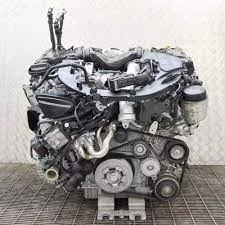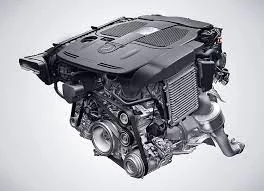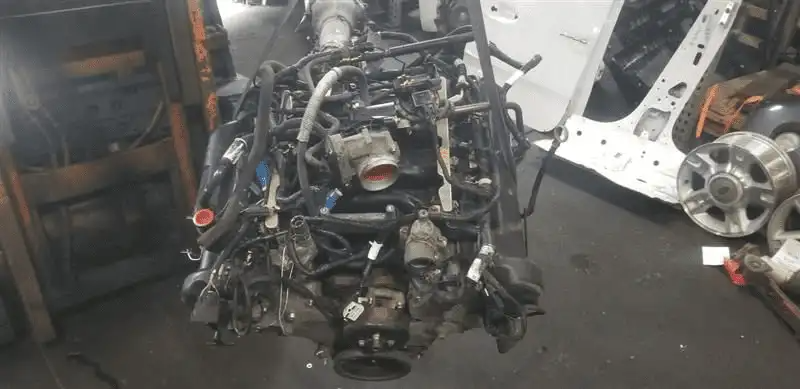
2012 Audi TT Engine Assembly
January 3, 2023
2011 BMW 328i Engine Assembly
January 3, 2023Buy Mercedes M276 engine online
$2,000.00 – $4,000.00
The Mercedes-Benz M276 engine is the replacement for the earlier M272 engines. Given that FCA controlled Mercedes at the time, it is also connected to the 3.6L Pentastar V6 engine that powers Fiat-Chrysler vehicles. The M276 is available from Mercedes in three different variations: 3.5L NA, 3.0L twin turbo, and 3.5L twin turbo. They are all excellent choices that provide a nice combination of effectiveness and performance. There are no exceptions to the norm in this case, although no engine is flawless. We go through some typical issues with the Mercedes-Benz M276 V6 engine and general reliability in this article.
The Mercedes-Benz M276[1] engine is a gasoline automotive piston V6 engine with direct injection.
The M276 engine’s main resemblance to the Chrysler Pentastar is its 60-degree angle, even though it was developed when Chrysler was still controlled by Daimler AG. This is shown by its 60 degree vee-angle rather than the 90 degree angle of its M272 predecessor. By eliminating the need for a balance shaft, the 60 degree vee-angle minimizes mechanical complexity while boosting fineness. There is no sharing of the components in any way.
Mercedes M276 engine 3.0/3.5L Engine Specs, Problems & Reliability
The 3.0 and 3.5 liter gasoline V6 engines in the Mercedes-Benz M276 engine range have direct fuel injection. Since its introduction in late 2010, the M276 series, which took the place of the older M272 V6 engine series, has been used on the majority of modern vehicles from those years (S350, CLS350, ML350, E350, W204 C350, and others). While the majority of the engines in the current series are turbocharged, only the 3.5L M276 engine was produced in both normally aspirated and turbocharged versions.
A naturally aspirated 3.5-liter version (M276 engine DE 35) that was first offered on the 2010 Mercedes-Benz C350 CGI BlueEfficiency served as the foundation for the M276 series, which debuted in 2010. Initially, the 3.5L M276 V6 engine used an aluminum cylinder block and cast iron cylinder liners. However, cylinder wall coating made of Nanoslide was used in place of liners in the beginning of 2013. According to the company, the Nanoslide coating decreases friction by up to 50% and lightens the engine’s overall weight by several kilograms.
The M276 engine block’s 60-degree V-angle made it possible to do away with the balancing shaft from the design. By the way, the cylinder banks of its M272 predecessor were at a 90-degree angle. Additionally, many pieces that were formerly constructed of aluminum and steel materials have been replaced with plastic or composite materials by engineers (such as the thermostat, heater valve, hydraulic lines, and belt pulley).
The M276 engine includes dual overhead camshafts (DOHC) operated by a two-stage chain drive system, aluminum alloy cylinder heads with four valves per cylinder (two intake and two exhaust valves), and DOHC. There are three gear chains, and a hydraulic tensioner is included with each. Hydraulic vane-cell camshaft adjusters are used on the intake and exhaust camshafts to control the independent variable valve timing for the intake and exhaust valves. Low-friction roller cam followers operate valves. A third generation direct injection system with piezoelectrically controlled injectors is also included in the engine. Up to five fuel injections may be delivered into the combustion chambers by the piezo injectors per intake stroke (two to three injections per cycle in normal operation).
Fuel is supplied to the high-pressure fuel pump, which is situated at the back of the right intake camshaft, via the low-pressure pump (4.5 to 6.7 bar). The high-pressure pump generates 120-200 bar of fuel pressure for the fuel rails to the injectors and is controlled by three extra cams. A multi-spark ignition that can produce up to five sparks each cycle ignites the mixture of air and fuel.
A three-stage variable intake manifold is included with the 3.5L naturally aspirated variants (engine speeds below 3,200 rpm; at 3,200-4,250 rpm; and above 4250 rpm). A vane-type, demand-controlled oil pump, an improved water pump, and a variable alternator are further features of the M276 engine.
The 3.0-liter model was made available in 2013. The M276 engine DE 30 LA engine has the same 3.5L V6 layout but a smaller bore and stroke measuring 88 mm x 82.1 mm (3.46 in x 3.23 in). Additionally, this DELA30 engine has dual IHI turbochargers for turbocharging. Each bank of cylinders has a turbocharger that can produce 1.8 bar of peak boost pressure (26.1 psi). Mercedes offered a version with a higher output for 2015–2016 called the DE30LA AMG. 10.5:1 compression was used, and turbochargers were adjusted to produce more boost. This engine produced 384 lb-ft of torque and 362 horsepower.
2014 saw the debut of Mercedes’ M276 DELA35 or DE35LA engine, a biturbo variant of the NA 3.5L M276 engine V6. The DE30LA was replaced by this new engine. Direct injection, a 10.7:1 compression ratio, and two IHI turbochargers are all characteristics of the DE 35 LA engine, which is similar to the 3.0-liter twin-turbo M276 engine. Even though the 3.5L engine has a larger displacement than its 3.0L predecessor, it uses less fuel because of a lower boost pressure.
We also sell;
| QUALITY | 20000km, 45000km, 80000km |
|---|
Only logged in customers who have purchased this product may leave a review.















Reviews
There are no reviews yet.